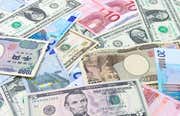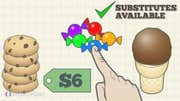We hope that this tutorial has given you some insight to the economy and the. Let's recap what we've learned in this tutorial:
- Economics is best described as the study of humans behaving in response to having only limited resources to fulfill unlimited wants and needs.
- Scarcity refers to the limited resources in an economy. Macroeconomics is the study of the economy as a whole. Microeconomics analyzes the individual people and companies that make up the greater economy.
- The Production Possibility Frontier (PPF) allows us to determine how an economy can allocate its resources in order to achieve optimal output. Knowing this will lead countries to specialize and trade products amongst each other rather than each producing all the products it needs.
- Demand and supply refer to the relationship price has with the quantity consumers demand and the quantity supplied by producers. As price increases, quantity demanded decreases and quantity supplied increases.
- Elasticity tells us how much quantity demanded or supplied changes when there is a change in price. The more the quantity changes, the more elastic the good or service. Products whose quantity supplied or demanded does not change much with a change in price are considered inelastic.
- Utility is the amount of benefit a consumer receives from a given good or service. Economists use utility to determine how an individual can get the most satisfaction out of his or her available resources.
- Market economies are assumed to have many buyers and sellers, high competition and many substitutes. Monopolies characterize industries in which the supplier determines prices and high barriers prevent any competitors from entering the market. Oligopolies are industries with a few interdependent companies. Perfect competition represents an economy with many businesses competing with one another for consumer interest and profits.
- Economists measure economic activity in a nation using gross domestic product (GDP), the rate of unemployment, and inflation.
- Alternatives to the mainstream theory of economics includes imperfect markets, behavioral economics, heterodox economics, and economic sociology.
Related Articles
-
 Insights
InsightsWhy We Splurge When Times Are Good
The concept of elasticity of demand is part of every purchase you make. Find out how it works. -
 Insights
InsightsHow supply and demand affects inelastic goods
Find out how the laws of supply and demand function for goods and services that are considered highly inelastic, including goods not yet discovered. -
 Insights
InsightsHow price inelasticity and inelasticity of demand differ
Learn how supply, demand and pricing are interrelated by studying the concepts used by economists to measure pricing fluctuations. -
 Investing
InvestingPrice Elasticity Of Demand
Price elasticity of demand describes how changes in the cost of a product or service affect a company's revenue. -
 Insights
InsightsMicroeconomics
This tutorial teaches the basics of one of the most important economic topics. A must for all investors.



